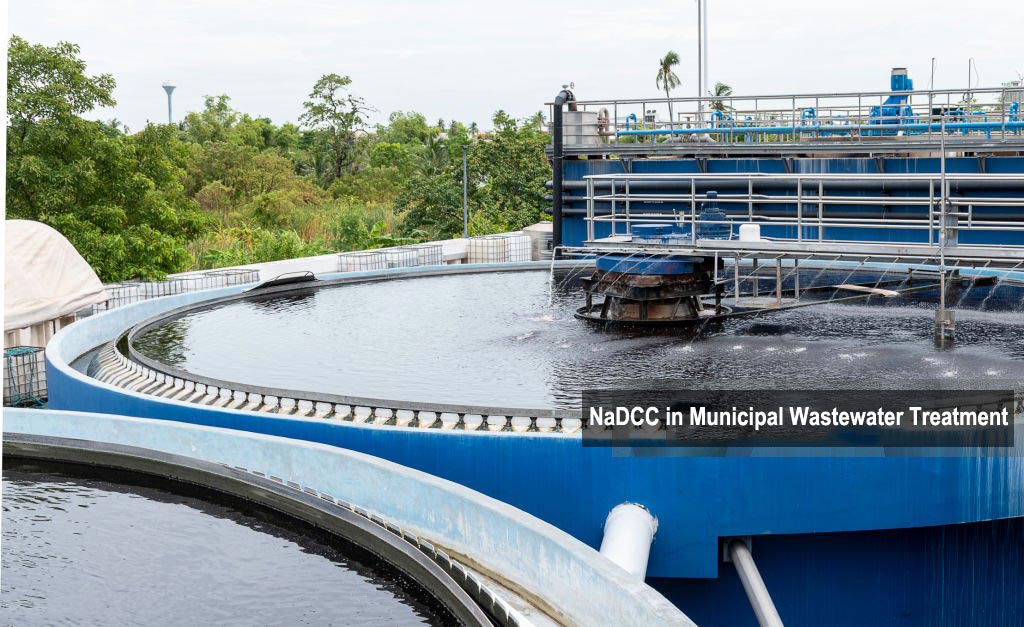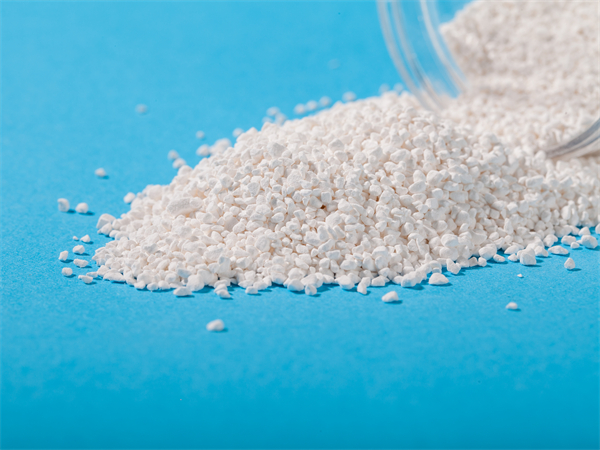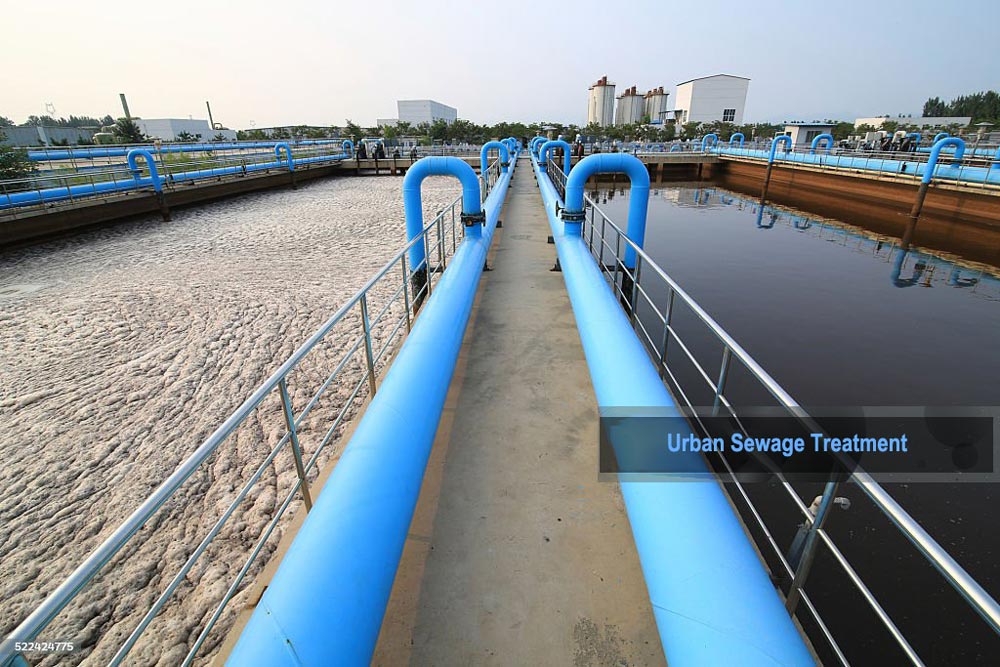
The goal of urban sewage treatment is not only to remove organic matter and suspended solids in water, but also to effectively disinfect to prevent the spread of pathogens. Disinfection of sewage is a very difficult task. Liquid chlorine, sodium hypochlorite, and ultraviolet disinfection are relatively traditional disinfection methods in sewage treatment. It has the characteristics of a good disinfection effect and simple operation, but there are problems such as secondary pollution, high cost, and unstable disinfection effect. Sodium dichloroisocyanurate is a new type of disinfectant, belonging to the chloramine chlorinated isocyanuric acid disinfectant. It is the most broad-spectrum, efficient, and safe disinfectant. The effective chlorine content is several times that of sodium hypochlorite, and the effect is more lasting. At present, sodium dichloroisocyanurate is widely used in swimming pool water disinfection, and its disinfection effect and safety stability have been recognized. It is also used in industrial water circulation water.
Basic characteristics of sodium dichloroisocyanurate
Sodium dichloroisocyanurate (NaDCC) is an efficient and broad-spectrum disinfectant with strong oxidizing properties. The chemical formula is C3Cl3N3O3. As a chlorine-based disinfectant, NaDCC releases hypochlorous acid (HOCl) after dissolving in water. This active substance can quickly destroy the cell walls of bacteria, viruses, and other microorganisms, thereby achieving a bactericidal effect.

The disinfection effect of NaDCC is far superior to that of traditional sodium hypochlorite and ultraviolet rays, mainly due to its high chlorine content, strong stability, low volatility, and easy storage and transportation. In addition, NaDCC produces fewer by-products during the disinfection process and is more environmentally friendly, meeting the requirements of modern sewage treatment for green environmental protection.
Disinfection requirements in urban sewage treatment
Urban sewage usually includes domestic sewage and some industrial wastewater. Untreated sewage contains a large number of pathogenic microorganisms, such as bacteria, viruses, and parasites. If these microorganisms are not eliminated, they will pose a threat to the water environment and public health. With the increasingly stringent environmental protection regulations, the requirements for the removal of pathogenic microorganisms in water bodies in sewage discharge standards are also getting higher and higher. Therefore, the disinfection process has become one of the key links in sewage treatment.
Traditional urban sewage disinfection methods mostly use liquid chlorine, sodium hypochlorite, ultraviolet rays and other substances, but these methods have certain shortcomings. For example, although liquid chlorine treatment has a good bactericidal effect, it is highly toxic and corrosive, has safety hazards, and requires special care during transportation and storage. Although sodium hypochlorite is safer than liquid chlorine, its effective chlorine content is low, the amount used is large, and it is easy to decompose during storage, affecting the disinfection effect. However, ultraviolet penetration is limited and cannot provide continuous disinfection. When there are suspended solids, chromaticity and other substances in the liquid, the disinfection effect will be affected.
In this context, sodium dichloroisocyanurate, which has the characteristics of high efficiency, stability and safety, has become an ideal choice for more and more urban sewage treatment plants.

Advantages of NaDCC in urban sewage disinfection
High-efficiency bactericidal ability
NaDCC can quickly release hypochlorous acid when dissolved in water. It has a strong broad-spectrum bactericidal effect. It can not only effectively eliminate common pathogenic microorganisms such as Escherichia coli, Vibrio cholerae and Salmonella, but also has significant inhibitory and killing effects on a variety of viruses and fungi. This advantage enables it to effectively deal with a variety of potential threats in sewage and ensure water quality safety.
Long-term stability
The stability of NaDCC makes it difficult to decompose during storage and use, and it can maintain a high effective chlorine content for a long time. This is particularly important for large-scale sewage treatment, ensuring the continuity and reliability of the disinfection effect.
Easy to use
NaDCC exists in solid form, which is easy to transport and store. Compared with liquid chlorine, NaDCC does not have the risk of leakage and is easier to operate. This convenience reduces the difficulty of operating urban sewage treatment plants and improves the safety of overall management.
Environmentally friendly
In urban sewage treatment processes, environmental protection is an important consideration. NaDCC does not produce too many harmful byproducts after decomposition in water, which is environmentally friendly. Its low production of organic chlorine byproducts makes it meet the current strict environmental protection standards and reduce the risk of secondary pollution.
Application of sodium dichloroisocyanurate in urban sewage disinfection
NaDCC has a wide range of applications in urban sewage disinfection, mainly in the following aspects:
Primary disinfection: In the primary treatment stage of sewage treatment plants, NaDCC can be used to pre-disinfect sewage and reduce the load of subsequent treatment.
Deep disinfection: In the deep treatment stage of the sewage treatment plant, NaDCC can be used to disinfect the effluent from biological treatment to ensure that the effluent quality meets the discharge standards.
Emergency disinfection: In the event of an unexpected water pollution incident, NaDCC can be used for emergency disinfection to prevent the spread of pollution sources.
Precautions for sodium dichloroisocyanurate in urban sewage disinfection
Dosage: The dosage of NaDCC should be adjusted according to the nature of the sewage, water temperature, pH value and other factors. Excessive addition will cause excessive residual chlorine and affect water quality.
Contact time: The contact time between NaDCC and sewage should be sufficient to ensure the bactericidal effect.
pH value: The appropriate pH value can fully exert the disinfection effect of NaDCC. Too high or too low pH value is not conducive to the function of NaDCC.
Nowadays, NaDCC has entered everyone's field of vision, and its wide range of uses has been gradually discovered by everyone. As an efficient, safe and environmentally friendly disinfectant, sodium dichloroisocyanurate has shown wide application potential in the field of urban sewage treatment. With the advancement of global urbanization and the improvement of sewage treatment standards, NaDCC will play an increasingly important role in sewage disinfection in the future.
Post time: Oct-10-2024

